Pediatric Pulmonology
Our team of pediatric pulmonologists treat children affected with asthma, sleep disorders and congenital abnormalities in lung and airways functions. In severe cases, sufferers are dependent upon the constant availability of medical machines and skilled caregivers for assisted and supported breathing.
It is vital for parents of children suffering from pediatric respiratory conditions to be well-informed on the range of treatment options available for long-term home care and the management of these symptoms.
Asthma
Asthma is a chronic disease that affects the airways that carry air in and out of the lungs. According to the World Health Organization (WHO), approximately 300 million people worldwide and 14–17 million people in the United States are affected by asthma. Asthma is the most common chronic disease in children.

Exercise Induced Bronchospasms
Exercise is essential for healthy growth and development, but for some children, physical activity can trigger symptoms of asthma. This condition, known as Exercise-Induced Bronchospasm (EIB), causes the airways to temporarily narrow during or after exercise, leading to coughing, wheezing, shortness of breath, or chest tightness.
-1.png?width=750&height=499&name=Untitled%20design%20(22)-1.png)
At Asthma & Asthma Specialists, we specialize in diagnosing and managing EIB in children. Our pediatric pulmonologists use advanced testing, including exercise challenge tests and spirometry, to accurately identify EIB and differentiate it from other respiratory conditions. With the right treatment plan—often including pre-exercise inhalers and personalized activity guidelines—children with EIB can stay active and thrive.
If your child experiences breathing difficulties during sports or play, talk to your provider about treatment options to help them breathe easier and stay in the game.
Congenital Malformations
Congenital malformations are defects of certain organs, such as the lungs, which typically are identified at birth. For patients that present symptoms of these malformations we will order the appropriate procedures, such as bronchoscopy or ct scans, but don't assess/diagnose in our practice.

Bronchoscopy
Bronchoscopy is a procedure designed to detect the cause of breathing difficulties and lung problems. Doctors can examine the inside of the lungs with a thin tube containing a light and camera via the mouth. The procedure is quick and painless but is a highly efficient way for doctors to assess possible lung issues.
CT scan
CT scans (also known as CAT scans) are X-ray that yield a dynamic cross-section image of the body, giving doctors better insight into the organs, much like slicing a loaf of bread.

Take control of your allergies & asthma today!
Asthma & Allergy Specialist has convenient locations throughout Charlotte, NC
Scheduling an appointment is easy with our online self-scheduling form.
